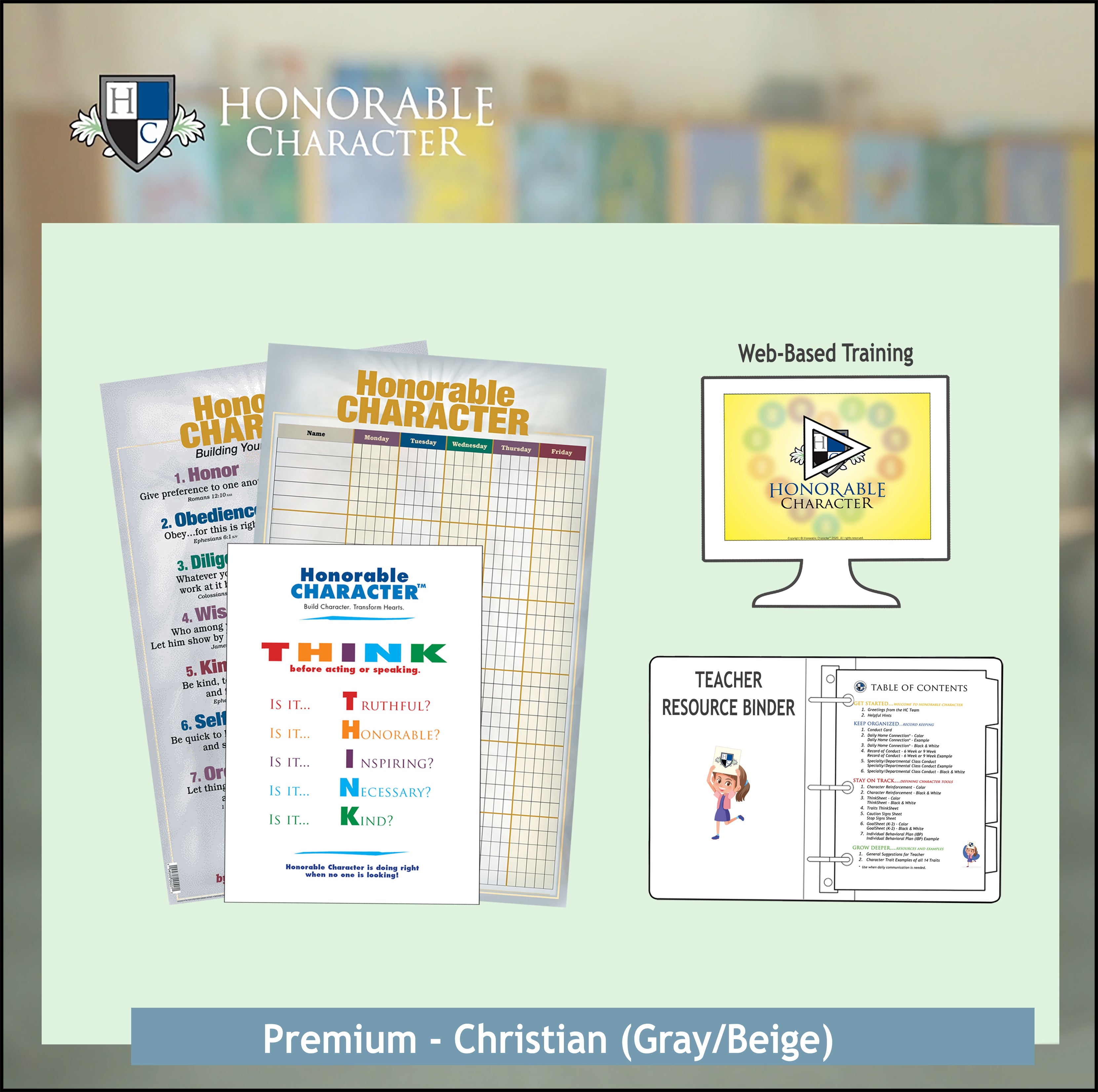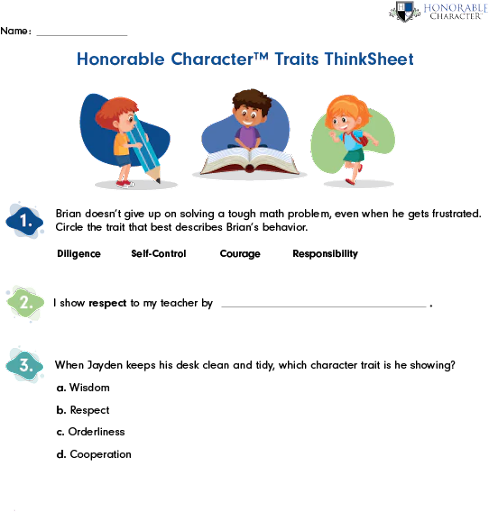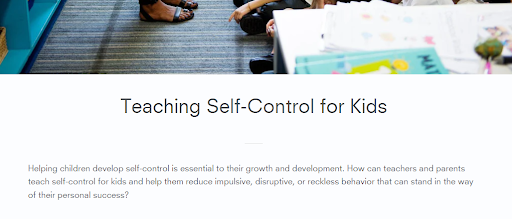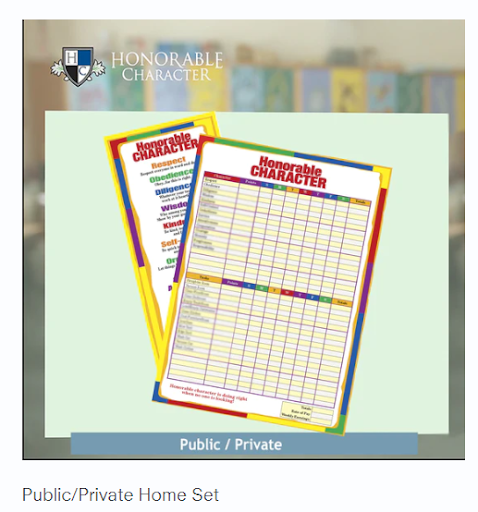
The Benefits of Using Anchor Charts for Classroom Management
What are anchor charts, and what are the benefits of using them in the classroom? Classroom anchor charts are visual learning tools that remind students of a topic’s key principles. They function as an anchor by keeping the important content visible, while holding the students’ attention, and solidifying the content in their mind.
Visual charts make thoughts and goals tangible and reliable. They serve as a resource that a young learner can refer to with just a glance. Having both subject matter and a classroom rules anchor chart in place reminds students of behavioral expectations, learning strategies, and academic goals.
The Benefits of Anchor Charts for Classroom Management
Classroom anchor charts provide a consistent visual reminder of academic, behavioral, and social expectations in the learning environment. By reinforcing these important concepts with character anchor charts highlighting honorable and ethical behaviors, teachers can support students in developing social skills, academic engagement and emotional intelligence.
Anchor charts can help by:
- Using verbal, written, and visual cues to engage and support students’ different learning styles
- Encouraging students to discuss, define, and feel ownership over their classroom behaviors
- Providing a consistent set of expectations between classrooms to reinforce appropriate behavior
Aligning Classroom Management Anchor Charts
Educators often struggle to create classroom management anchor charts for their classrooms. Anchor charts for academic subjects and topics can be made with student input and teacher guidance, but the anchor charts used for classroom management are most effective when they are consistent across the entire school.
Some time-conscious teachers and administrators select a visual anchor chart from a proven program, like the Honorable Character Classroom Management System, for a ready-made solution for schoolwide consistency. Others create their own based on trusted resources. Either way, the elements of an anchor chart include:
- The title
- The objective or intention of the chart
- The subject line
- A summary of the subject, rules, or expectations
- Tips and reminders students can refer to
- Images, pictures, or icons representing every concept
Using Anchor Charts to Promote Better Behavior

Anchor charts focusing on positive behaviors and habits help create a healthy and productive learning environment. Schools use these charts to build a consistent language and classroom culture that encourages academic success, supports students’ confidence, and develops the character that ultimately leads to their success.
When classroom expectations are visible and clearly stated, students feel safe to engage in learning confidently, hold themselves accountable, navigate transitions smoothly, and participate fully in daily routines. Well-designed classroom anchor charts simultaneously support student learning and character growth.
Classroom Management Strategies Using Anchor Charts
Creating an effective classroom management anchor chart can be challenging. You should bring teachers, staff, and administrators together to choose the right content for your classroom behavior anchor charts. Then, you must design them visually appealing with grade-appropriate language and graphics and print them on high-quality chart paper for distribution.
Many school districts choose to save their teachers’ precious time and select a proven product line designed for district-wide use for all grade levels. This can be a great tool for beginning to build a positive school culture that celebrates positive character traits and offers guided practice in areas of growth. Students and teachers thrive in a school where everyone is anchored to the same solid principles of respectful and supportive language and behavior.
Why Choose a Consistent Anchor Chart System?
When schools use a consistent classroom management anchor chart across the campus, with age-appropriate language and graphics, students can:
- Engage actively in learning.
- Understand expectations and goals of classroom behavior.
- See visual reminders when the teacher directs or refers to the graphics used.
- Work and socialize more independently in a safe and inclusive environment.
- Refer to a resource to generate deeper discussions using critical thinking skills.
- Understand classroom procedures and routines and how they promote fairness and respect.
- Improve social skills by learning better ways to communicate with sensitivity and respect for others.
Providing a Solid Anchor for Student Improvement
Character-focused anchor charts are effective classroom management tools to reinforce expectations for student behavior. Parents can use similar tools to bridge the gap and promote the same valued character traits at home. Promoting and recognizing positive real-time character and behavior is the cornerstone to the Honorable Character system.
This evidence-based system is proven successful in classroom management and in developing a school culture of respect, honesty, kindness and responsibility in all learning environments. Studies show that a focus on teaching character can improve overall behavior by 70% and traits such as responsibility and respect by 50%.
Implementing the Honorable Character system across the grade levels in your school or home has many advantages. Our system can use anchor charts and tangible tools to reduce disruptions and help children learn. Teachers can spend less time managing problem behaviors and more time teaching the curriculum.
How Anchor Charts Work with Honorable Character
Teachers can successfully create character-focused anchor charts by selecting one of Honorable Character’s 14 character traits to display in their classroom. Besides engaging with a student positively when they exhibit a character trait like respect, a visual and interactive anchor chart relating to that trait can be used to deepen the learning and character development.
When introducing a class to a new concept, a teacher can create a blank anchor chart and engage the students in an active discussion to complete it. For example, when teaching RESPECT, students can share what they think respect "looks like" in the classroom, the school, at home, or with each other. This visual and interactive RESPECT anchor chart deepens students' understanding of the trait and encourages their character growth and development. The anchor chart below is an example of what a teacher's anchor chart for a specific trait might look like.

Learn More About Classroom Management Charts and Materials

If you want to learn more about how the Honorable Character system can transform school cultures and promote social and emotional growth for teachers and students, contact us for more information. We have complete systems that include a character trait poster, teacher resource binder, recording charts, conduct cards, and a year of access to web-based teacher training modules.
We even offer staff training and on-demand ask-an-expert resources to help school districts implement the best positive reinforcement approaches to problem behaviors. With premium packages for elementary school districts at $99.99 per classroom, you can purchase these supportive resources at a fraction of the cost of developing your own.






Add a comment